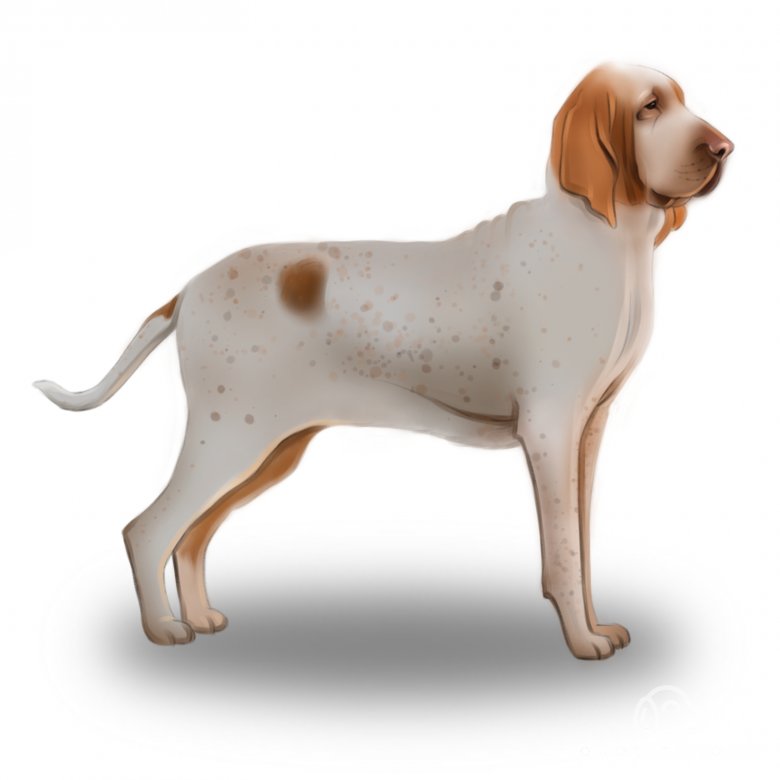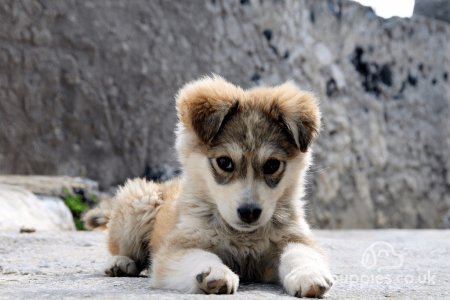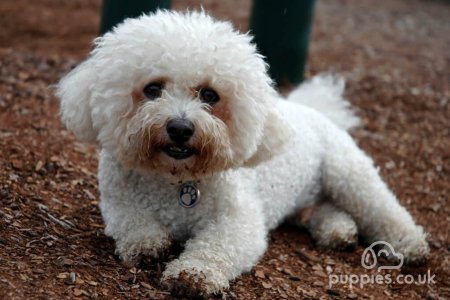Bracco Italiano Puppies and Buying Advice
Italy may be famous for its superb cuisine and culture, but it’s also the home of the wonderful Bracco Italiano. This breed, also called the Italian Pointer, is bred for pointing and retrieving and as such is highly intelligent and a beautiful companion, particularly if they’re raised well as puppies. Although this breed is more famous in Continental Europe, it’s gaining traction in the UK thanks to its many great qualities. The Bracco Italiano is a large breed that’s kind and gentle with children and other dogs. Time will tell if others discover the joy of owning their very own Bracco Italiano in the UK, but regardless, it’s worth finding out why this breed makes such an ideal companion.
Why Bracco Italianos are Great
Some highlights of Bracco Italianos:
Intelligence: the Bracco Italiano is an intelligent breed, but some patience is required to train them.
Family-friendly: this breed is an excellent choice for families with children of any age due to its kind and gentle disposition.
Grooming: this breed has a coat that’s easy to maintain, thus requiring little grooming.
Dog-friendly: this breed is sociable and gets along well with other breeds quite well.
Tolerates being left alone: the Bracco Italiano doesn’t require constant attention and as such won’t mind if the owner or family aren’t home for a while.
Things to Consider when Looking at Bracco Italianos for Sale
Some downsides to the Bracco Italiano:
Odour: this breed has a distinctive smell that may be off-putting at first. Owners will need to get accustomed to their musky odour.
Apartment-friendly: this large breed doesn’t tolerate confined spaces and small apartments. Owners should have plenty of space to accommodate them.
Rarity: the Bracco Italiano is not common in the UK and as such may command higher prices as well as an increased difficulty finding one as a puppy.
First-time owners: this breed frequently shows signs of stubbornness and as such may not be the most ideal puppy choice for first-time owners.
History of the Bracco Italiano
The Bracco Italiano traces its ancestry back to the breeding of hounds and gundogs in Continental Europe. It’s possible that the first Braccos were a cross between the Segugio Italiano and the Asiatic Mastiff. It should be known that these origins are hotly debated. Regardless of its exact origin, it is known that the Bracco Italiano was used in the Mediaeval period and was a popular choice of fowl hunting dog for monarchs and the aristocratic class during the Renaissance, having been owned by the Medici and Gonzaga families of northern Italy. Two main breeds of Bracco Italiano were prevalent during this period: the lighter-coloured and more nimble Piedmontese Pointer from the mountainous Piedmont region, and the stockier white and chestnut coloured Lombard Pointer from Lombardy. During the 19th and 20th centuries, the Bracco’s numbers declined significantly. It was through the intensive help of Italian breeder Ferdinando Delor de Ferrabouc that the Bracco’s numbers increased once again. This breed made its way to England in 1989 and was recognised by the Kennel Club of Great Britain soon thereafter.
Appearance
Imagine a breed that is simultaneously big, strong and gentle-looking and this summarises the Bracco Italiano’s appearance well. Their heads have distinctively long, drooping ears and ‘floppy’ upper lips that give them a look of seriousness. Even as puppies, they appear to have a wise yet proud look. The Bracco Italiano is a large breed, not dissimilar to the Spinone or Bloodhound, with a short and dense coat of glossy fur. Their coat should only feature a maximum of two colours, with black patches and additional colours being undesirable to the breed.
How big is the Bracco Italiano?
Braccos are large-sized dogs. Males grow on average to 58–67 cm in height, whilst females can grow up to 55–62 cm high.
How heavy is a Bracco Italiano?
Fully-grown adult male and female Braccos weigh between 25-40 kg on average.
What colour is the Bracco Italiano?
This breed has the following commonly-accepted coat colours:
Speckled hues of amber and orange roan, as well as liver-coloured browns approaching a darker chestnut colour, are all within the spectrum of allowable colours according to the Federation Cynologique Internationale.
Temperament
For such a large breed of dog, the Bracco Italiano is extremely gentle and caring. Due to its legacy as a hunting dog, the Bracco appears tough and is well-adapted to hunting all sorts of game. It’s also fairly easy to train, although some patience may be required. Large and intelligent dog breeds such as the Bracco Italiano often have a tendency to behave stubbornly, so patience will be an important asset when raising a Bracco puppy.
Do Braccos make good guard dogs?
The Bracco Italiano is an average guard dog, but it is an ideal watchdog. The reason is due to their excellent observation skills and ability to alert owners to suspicious activity. Seldom will they show aggression, however, preferring to bark from a distance.
Do Braccos bark a lot?
As with may larger breeds, the Bracco Italiano doesn’t normally bark very much. They will bark when alerted and puppies may bark whilst playing.
Are Braccos easy to train?
The Bracco Italiano is capable of learning thanks to its superb intelligence, but they may show signs of stubbornness from time to time.
Are Braccos playful?
Bracco Italiano puppies love to play, particularly fetch and other games whereby they are using their natural hunting instincts to retrieve. It’s advised that owners play outdoors with their puppies, since they’ll grow to be quite large and may create a mess around the house.
Are Braccos good with children?
For families with children, the Bracco Italiano is amongst the most kind and gentle breeds to have around the house. They look big and powerful, but they’ve got a soft heart and love nothing more than socialising with children.
Are Braccos good with other pets?
The Bracco Italiano is one of the best breeds for owners with other dogs. Smaller pets may, however, trigger the Bracco’s prey drive and should be supervised at all times to ensure that no harm is done.
Can I leave a Bracco Italiano alone?
This breed tolerates being left alone for extended periods of time. This isn’t carte blanche to neglect them, however. Puppies require lots of love and socialisation to understand and appreciate their owners as well as to prevent destructive behaviour due to boredom.
Do Braccos like water?
If a Bracco Italiano enjoys the water on their own terms, they can become avid swimmers. They aren’t too fond of being on boats.
Health
How long do Braccos live?
Generally, Braccos are expected to live anywhere from 12-14 years.
How much exercise does a Bracco Italiano need?
A Bracco Italiano puppy requires plenty of exercise, and so too do fully-grown adults. Try to give them at least two hours a day of fresh air and playtime, preferably in a park or somewhere they can roam with the owner’s supervision.
What are a Bracco Italiano’s common health issues?
This breed has a slightly higher chance of developing health problems than most other breeds. Some of the Bracco’s known health issues are:
Ear infections;
Bloating;
Ectropion;
Entropion;
Hip dysplasia;
Kidney issues.
Care
How much space do I need for a Bracco Italiano?
Plenty of space is required for a Bracco Italiano. This breed is large and thus unsuitable for urban apartment dwelling. Large homes with gardens are ideal.
What should I feed my Bracco Italiano?
A fully-grown Bracco Italiano should be fed 5 to 6 cups of high-quality dog food every day, divided into two meals. Puppies should be fed a little less than this, divided into 3-4 meals per day. Adjust as necessary to promote good health and to prevent overfeeding.
How much grooming do Braccos need?
This breed requires little grooming. The Bracco Italiano’s coat of fur is short and doesn’t need to be brushed more than once weekly.
Do Braccos shed?
The Bracco Italiano sheds a moderate amount. Weekly brushing can help to reduce the total amount of cleaning required.
Average Costs
How much does it cost to keep a Bracco Italiano?
As a rough guide in pricing: Cost to buy: roughly £600-1,100 for a well-bred Bracco Italiano puppy Other costs (Vet, Food etc): £110-160 per month
Specific Buying Guide
You can read our general buying guide here, with the most important thing being going to view your Bracco Italiano puppy, seeing it with its mother, and checking the quality of the breeder. More specifically, here is some Bracco Italiano puppy buying advice:
Owing to their rarity in the UK, Bracco Italiano puppies are susceptible to breeding from ‘puppy mills’ and other less reputable sellers. Ensure that Kennel Club breeding regulations for Bracco Italiano puppies are being followed.
Historically, nearly all Bracco Italiano dogs had their tails docked. Ensure that your Bracco Italiano puppy doesn’t have a docked tail unless it was done for medical reasons, and if so, ask for medical documentation to prove that the tail was docked due to necessity. Failure to justify a docked tail can result in fines.
Other Reading, Adopting Bracco Italiano Puppies and Rescue Organisations
A big thank you to the following sources who helped to shape this article: Kennel Club of Great Britain: https://www.thekennelclub.org.uk/search/breeds-a-to-z/breeds/gundog/bracco-italiano/ Federation Cynologique Internationale: https://www.fci.be/Nomenclature/Standards/202g07-en.pdf Dogell: https://dogell.com/en/dog-breed/bracco-italiano Gun Dog Mag: https://www.gundogmag.com/editorial/breed-profile-bracco-italiano/176362 https://bracco-italiano.co.uk/ https://braccoitaliano.co.uk/ https://www.thekennelclub.org.uk/services/public/findarescue/Default.aspx?breed=2175











